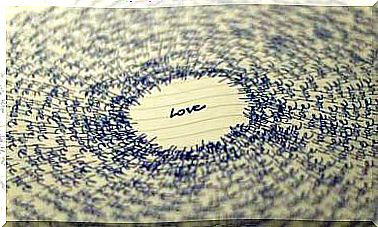What Is Hyperreflexivity?

What is hyperreflexivity? Before going into its definition, let’s talk about what it means to be reflective (or what is the same, to have a tendency to reflect). Reflecting means thinking and considering something carefully and carefully. This action has the objective of studying, understanding and forming a valid opinion on a certain matter or question.
Normally to make a decision about it. In the case of hyperreflexivity, we speak of excessive or very large reflectivity. Specifically, of a hyper-reflection towards oneself.
This phenomenon could be defined as ‘heightened self-awareness’. But what exactly does it mean and how does it fit into the field of psychopathology? How is it related to mental disorders?
What is hyperreflexivity?
To understand what the word hyperreflexivity means, we are going to look at the origin of this quality. Someone reflective is someone accustomed to acting reflectively, that is, through thought and reasoning. People who are very thoughtful often go to introspection processes. They think a lot before and after acting; that is reflecting.
In the case of hyperreflexivity, the prefix -hyper- is added, which means ‘excessive, very large or superior’. Thus, hyperreflexivity is intended to denote the tendency to reflect excessively, especially in relation to oneself.

Hyperreflexivity in psychopathology
The concept of hyperreflexivity is found in the field of psychopathology. According to Marino Pérez Álvarez, in an article published in Psicothema in 2008, hyperreflexivity is understood as an “ intensified self-awareness in which the person detaches himself from the normal forms of involvement with nature and society, taking himself as its own object ”.
Other authors, such as Stanguellini (2009), have called this concept hyperreflective self-recognition. For his part, Foucault, in 1966, defined this concept as a “hypertrophy of subjectivity”.
Several psychological theories, as Marino Pérez already proposes in the aforementioned article, defend that hyperreflexivity is the condition of mental disorders, since without it many of them would not exist.
Clinical and historical perspective
This thesis of which we speak is argued through two perspectives: a clinical and a historical one. From a clinical perspective, it is argued that hyperreflexivity is not a mere concomitant of mental disorders, but that it has a causal (cause-effect) priority over it.
This cause-effect relationship is supported by empirical evidence of different types (correlational, experimental and therapeutic); In other words, it has been studied and demonstrated in numerous studies of a different nature.
On the other hand, from the historical perspective, it is shown that this phenomenon depends on certain historical-cultural circumstances given from the Renaissance, and that they have to do with the person. Continuing with this perspective, the mental disorders that we know today would not exist before that time.
The influence of society
But what else is behind the concept of hyper-reflexivity? The influence of society on the emergence of mental disorders. And, according to the theories that defend this phenomenon, psychological disorders have to do with the social model imposed by modernity and postmodernity.
Why? Because they configure and contextualize the disorder and because society partly generates them, in addition to having a causal effect on their interaction with the person who suffers from it.
As stated by Francisco Traver Torras, Head of the Mental Health Area of the Castellón Provincial Hospital Consortium, “ societies determine the qualities of psychological disorders and, in addition, they cause psychological disorders, if only because the label psychological disorder belongs to to modernity ”.
An example of hyper-reflexivity: sadness
This concept is a bit complex and not always easy to understand. To understand it a little better, Francisco Traver proposes an example with sadness.
According to him, both pathological sadness and “normal” sadness are adaptive. What happens is that normal sadness is functional and pathological is dysfunctional.
Both types of sadness arise to solve problems and to be able to adapt in moments of adversity and collapse of the affective world. But with pathological sadness something paradoxical happens; This becomes the object of the patient’s focused attention or, what is the same, the person begins to observe himself (he is the subject of his observation).
And we could extrapolate this example to other types of emotions, following with hyperreflexivity as the basis for psychological disorders or as the basis for certain dysfunctional emotions.

How does hyperreflexivity arrive?
Traver continues his explanation regarding sadness. He argues that when this mentioned pathological sadness occurs (and recurrently), a loop is formed through which the person tries to “get rid of” that representation loaded with unpleasant emotions.
The noise of these negative emotions becomes audible and the emptiness becomes a corporeal experience, somewhat robotic and supposedly directed by an external artifact. What happens then?
That the person tries to understand, focusing on their own experience, placing it at the center of their concerns. Then comes the hyper-reflexivity, that “me” that occupies everything, which can end up leading to a psychological disorder.
The concept of hyper-reflexivity is not easy to understand. However, in this article we have made some brushstrokes of its meaning, very generic, so that it can be understood why some psychological theories place it as a necessary condition when suffering from a mental disorder.









